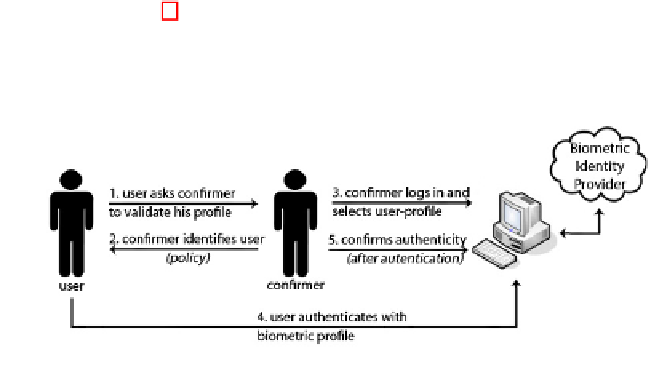Information Technology Reference
In-Depth Information
Fig. 2. Trust Relationship Tree
authenticity must be possible, to build a bilateral trust relationship. This takes
us to the second method to proof the authenticity of a profile, the
confirmation
.
In contrast to the observation process, the confirmation is carried out between
two already enrolled users. Analogous to the observer, the role of the confirmer
is introduced. Figure 3 shows a generic confirmation process. With the confirma-
tion, bilateral trust relations can be established. Moreover, the trustworthiness
can be increased after the completion of the enrollment process. This leads to a
Web of Trust.
Fig. 3. Schematic Flow (Confirmation)
In Figure 4 Alice observed Bob's enrollment and Bob confirmed the authen-
ticity of Alice's biometric profile afterward. Hence there is a bilateral trust re-
lationship. The relation between Alice and Dave however is different. Alice can
trust Dave's profile transitively. Dave confirmed the validity of Alice's profile
and therefore has a direct trust relation toward Alice.
4.2 Trust Metric
To make the level of trust measurable, a trust metric is necessary. Since the
literature concerning trust metrics has been growing rapidly during the last
years, a lot of trust metrics exist [11]. Some of them could certainly be used
to solve this problem. In this work we point out what requirements a trust
metric has to meet and what it could look like. The described metric should
be understood as an example. As mentioned in section 3.1, trust is subjective




